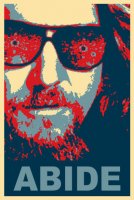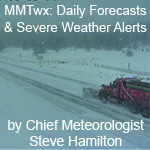- Posts: 3724
- Thank you received: 130
- Forum
- Life Up the Hill
- Scanner & Emergency Info, Weather Forecasts
- wxgeek's weather-Snow Outlook for 2013/2014 Season
wxgeek's weather-Snow Outlook for 2013/2014 Season
- RenegadeCJ
-
 Topic Author
Topic Author
- Mountain Legend
-

Less
More
18 Sep 2013 13:08 #1
by RenegadeCJ
Too bad future generations aren't here to see all the great things we are spending their $$ on!!
wxgeek's weather-Snow Outlook for 2013/2014 Season was created by RenegadeCJ
As promised, a brief outlook for our upcoming snow season. Currently, the most reliable seasonal prediction tool available is the El Nino Southern Oscillation (ENSO)phenomenon, and the associated Oceanic Nino Index (ONI). For those not understanding these terms, a brief background. In the equatorial Pacific Ocean, a pool of warm water sloshes back and forth like in a bathtub. When the warmer than usual water resides in the western Pacific, there is a corresponding pool of cooler than normal water in the eastern Pacific. This situation if a cold phase of ENSO, and the ONI is less than -0.5, and referred to as a La Nina condition. When the opposite is present, warmer than usual water in the eastern Pacific and cooler than normal water in the western Pacific, this is a warm phase of ENSO, the ONI is greater than 0.5, and referred to a El Nino. When the sea surface temperature across the Pacific is near normal, this is a Neutral phase of ENSO, the ONI is between -0.5 and 0.5, and we have no reference for this scenario, although I jokingly call this El Nada. there are other oceanic and atmospheric oscillations that impact seasonal weather, but the correlation between them and CO snowfall is not nearly as clear as with ENSO. There is also the Madden-Julian Oscillation (MJO) which is a 30-60 day oscillation that can have a large impact on regional weather as they move from east to west.
In general, during La Nina events, the CO mountains can receive above average snowfall, but the foothills and especially the plains generally receive below average snowfall. During El Nino events, the mountains tend to receive below average snowfall while the foothills and plains can receive above average snowfall. During ENSO Neutral phases, the signal is not nearly as clear, but overall CO mostly receives below average snowfall during ENSO Neutral seasons.
For the past 21 years, snowfall records have been kept on Conifer Mountain, and records have been kept in Denver since 1882. I have gone back and applied the ONI since 1950 when it began being measured to Conifer Mountain and Denver snowfall records. A definite correlation exists.
For Conifer Mountain, there have been 6 seasons with El Nino conditions, 8 seasons with La Nina conditions, and 7 ENSO Neutral seasons. The average snowfall for La Nina seasons is 152 inches, for El Nino seasons it is 226 inches, and for Neutral seasons it is 152 inches. The 21 year average snowfall on Conifer Mountain is 173 inches. Of the 8 La Nina seasons, 2 seasons had above average snowfall, while 6 had below average. For the 6 El Nino seasons, all 6 had above average snowfall. Of the 7 Neutral seasons, 2 had above average snowfall, while 5 had below average. From this sample, I can apply the probability of above or below average snow for an upcoming season. For an El Nino season, there is a 100% probability of above average snowfall. For a La Nina season, there is a 75% chance of below average snowfall, and a 25% probability of above average snowfall, and for Neutral seasons, there is a 71% probability of below average snowfall, and a 29% probability of above average snowfall.
For this upcoming season, all indications are that ENSO Neutral conditions will prevail through the Spring of 2014. This translates to a 71% probability of below average snowfall, with a 29% probability of above average snowfall. The range of snowfall during ENSO Neutral seasons has ranged from a low of 102 inches in 2001/2002, to a high of 180 inches in 1993/1994. The average is 152 inches during Neutral seasons. So my guess is that we will see somewhere between 138 and 177 inches on Conifer Mountain this coming season.
The statistics are pretty similar for Denver. The average snowfall is 57.5 inches. For 62 years since 1950, 21 have been La Nina with an average snowfall of 56.3 inches. 19 have been El Nino years, with an average snowfall of 63.8 inches, and 22 have been Neutral with an average snowfall of 57.2 inches.
_________________
"Climatology is what you expect, Weather is what you get".
"It is better to be roughly right than precisely wrong".
In general, during La Nina events, the CO mountains can receive above average snowfall, but the foothills and especially the plains generally receive below average snowfall. During El Nino events, the mountains tend to receive below average snowfall while the foothills and plains can receive above average snowfall. During ENSO Neutral phases, the signal is not nearly as clear, but overall CO mostly receives below average snowfall during ENSO Neutral seasons.
For the past 21 years, snowfall records have been kept on Conifer Mountain, and records have been kept in Denver since 1882. I have gone back and applied the ONI since 1950 when it began being measured to Conifer Mountain and Denver snowfall records. A definite correlation exists.
For Conifer Mountain, there have been 6 seasons with El Nino conditions, 8 seasons with La Nina conditions, and 7 ENSO Neutral seasons. The average snowfall for La Nina seasons is 152 inches, for El Nino seasons it is 226 inches, and for Neutral seasons it is 152 inches. The 21 year average snowfall on Conifer Mountain is 173 inches. Of the 8 La Nina seasons, 2 seasons had above average snowfall, while 6 had below average. For the 6 El Nino seasons, all 6 had above average snowfall. Of the 7 Neutral seasons, 2 had above average snowfall, while 5 had below average. From this sample, I can apply the probability of above or below average snow for an upcoming season. For an El Nino season, there is a 100% probability of above average snowfall. For a La Nina season, there is a 75% chance of below average snowfall, and a 25% probability of above average snowfall, and for Neutral seasons, there is a 71% probability of below average snowfall, and a 29% probability of above average snowfall.
For this upcoming season, all indications are that ENSO Neutral conditions will prevail through the Spring of 2014. This translates to a 71% probability of below average snowfall, with a 29% probability of above average snowfall. The range of snowfall during ENSO Neutral seasons has ranged from a low of 102 inches in 2001/2002, to a high of 180 inches in 1993/1994. The average is 152 inches during Neutral seasons. So my guess is that we will see somewhere between 138 and 177 inches on Conifer Mountain this coming season.
The statistics are pretty similar for Denver. The average snowfall is 57.5 inches. For 62 years since 1950, 21 have been La Nina with an average snowfall of 56.3 inches. 19 have been El Nino years, with an average snowfall of 63.8 inches, and 22 have been Neutral with an average snowfall of 57.2 inches.
_________________
"Climatology is what you expect, Weather is what you get".
"It is better to be roughly right than precisely wrong".
Too bad future generations aren't here to see all the great things we are spending their $$ on!!
Please Log in or Create an account to join the conversation.
- FredHayek
-

- Mountain Legend
-

Less
More
- Posts: 30163
- Thank you received: 178
18 Sep 2013 20:15 #2
by FredHayek
Thomas Sowell: There are no solutions, just trade-offs.
Replied by FredHayek on topic wxgeek's weather-Snow Outlook for 2013/2014 Season
So the Farmer's Almanac prediction of extra snow and super cold looks overly pessimistic.
Thomas Sowell: There are no solutions, just trade-offs.
Please Log in or Create an account to join the conversation.
- Forum
- Life Up the Hill
- Scanner & Emergency Info, Weather Forecasts
- wxgeek's weather-Snow Outlook for 2013/2014 Season
Time to create page: 0.127 seconds





